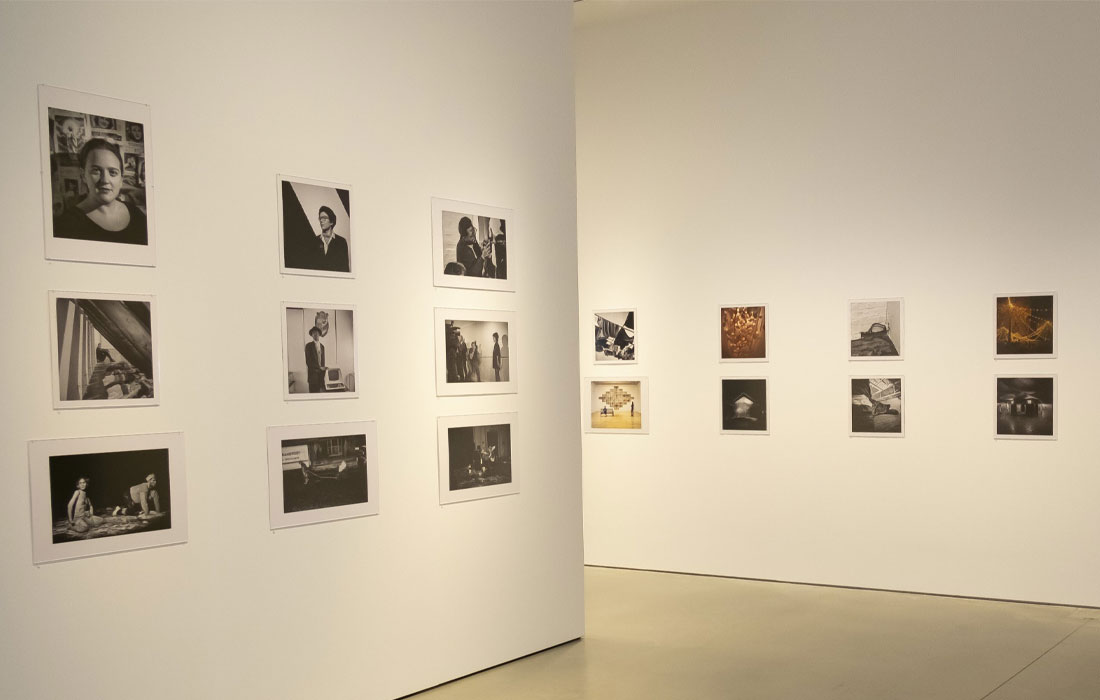
Edward Woodman’s work at John Hansard Gallery, Southampton
Photo: © Stuart Keegan
Organising a life’s work
A new app offers an innovative and cost-effective way for artists to shape their legacies within their lifetimes, says Ellie Porter.
Archives are the cornerstones of knowledge. They are and will continue to be the reference points for researchers, curators and historians seeking material evidence of the past and present. The stories told by our national art institutions through exhibition programming and acquisition strategies will be dictated by the state of materials left behind by major contributors to cultural heritage.
Artists and estates need to prioritise their archive, outlining feasible options for digitising and conserving materials
With much conversation around art having shifted from formal articles to social media, and the dormancy of artwork captured in obsolete formats, like VHS and MiniDV, a new approach to preserving art is critical. Artists and estates need to prioritise their archive, outlining feasible options for digitising and conserving materials. By giving artists the tools to shape their legacies within their own lifetime, posthumous decisions by relatives and institutions will be enriched, true to the artists’ intentions.
Physical materials and written records carry emotional gravitas. They display evidence of past use through markings, signature and even decay. Nevertheless, their existence is precarious. All it takes is an unexpected flood, a raise in the cost of storage prices, a transaction without a backed-up record, and the future of an artwork becomes uncertain. Without a digital inventory, artworks can disappear without a trace.
Contemporary artist Grayson Perry lost track of much of his own early ceramic works, shown in exhibitions in London, Paris, New York and San Antonio between 1983 and 1994, as they were dispersed, undocumented and sold without record. The Holburne Museum in Bath is helping Perry recover these invaluable pieces, but clearly, the importance of archiving at any stage of an artist’s career is essential.
In reality, it is not possible for every artist and estate to deliver a public campaign to retrace precious lost materials. Diminishing public funds for visual arts and a lack of private support has made the creation of innovative archives more challenging than ever.
Archiving app
In October last year the Art360 Foundation launched the Art360 app, a free mobile app for archiving art. It works for artists and estates working with a variety of media, including performance, moving image, photography, painting, sculpture and conceptual practice. It is a radical alternative to traditional archiving, placing the power in the artist’s hands and presenting a model of best practice for preserving contemporary art.
The app covers essential stages of archiving including the digital archive, physical archive, inventory, photographic documentation and how to map stories, themes and influences through materials. There are checklists to complete, videos featuring archival experts and a visual tracker to help users move through the app at their own pace.
Securing the future
Archiving not only improves the business of being an artist but creates unprecedented opportunities for rehousing key pieces by significant, but often underexposed, artists.
As our recent collaboration with John Hansard Gallery on the retrospective exhibition of photographer Edward Woodman proves, artists' archives have a tangible public benefit. Through the meticulous digitisation of negatives, Woodman’s documentation of pioneering conceptual art in Britain during the 1980s and 1990s has become publicly visible for the first time in 20 years.
If we can help artists and estates organise a life’s work, we will have a richer and more dynamic art history to share with future generations.
Ellie Porter is Project Curator at Art360 Foundation.
www.art360foundation.org.uk/
Tw @Art360Fdn
Join the Discussion
You must be logged in to post a comment.